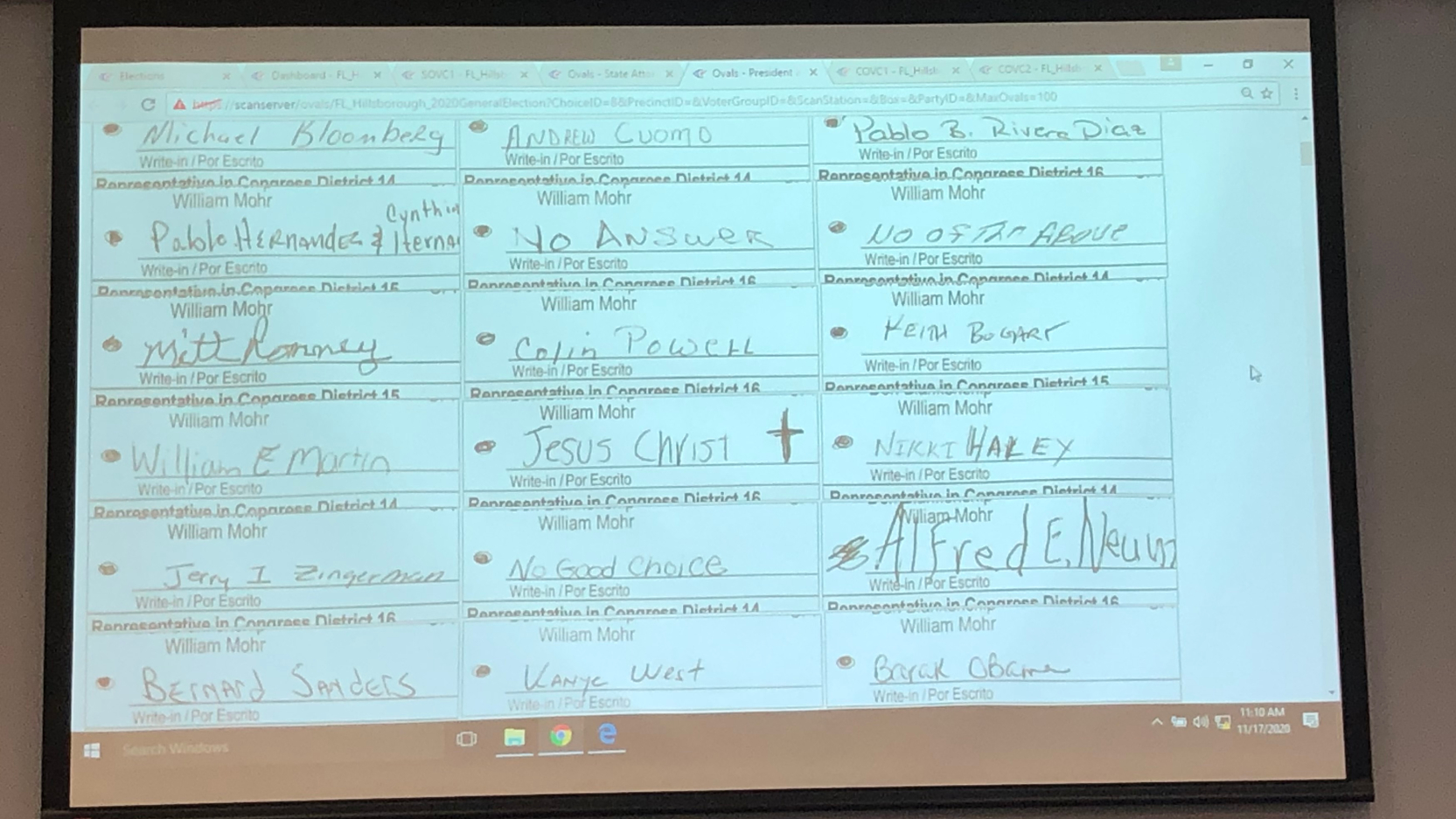The canvassing board of the Hillsborough County Supervisor of Elections office signed off on their official audit of the 2020 election Tuesday morning.
What You Need To Know
- Judges showed presentation, then signed off on audit
- Hillsborough uses software to conduct audit; most FL counties do by handcount
- More Politics headlines
- More Decision 2020 headlines
Judges Margaret Taylor and Miriam Valkenburg signed the document following a 15-minute presentation on how the office’s automatic auditing system reviewed the 2020 general election results in the county.
Hillsborough is one of approximately nine election offices in the state that conducts its post-election audits by using the ClearAudit software, created by Clear Ballot out of Boston. The ClearAudit software creates an image of every paper ballot and lets election officials quickly call up ballots with questionable markings to verify votes.
The rest of the counties in the state conduct their audits manually, with election staffers hand counting all of the votes cast in up to 2 percent of precincts in one randomly selected election.
When conducting a machine audit, state law requires that the tally sheet include counting all the votes in at least 20 percent of the precincts chosen at random.

The audit revealed that some voters wrote in names of people not on their ballot. (Mitch Perry/Spectrum Bay News 9)
Hillsborough County Supervisor of Elections Craig Latimer goes further than that, counting 100 percent of all the precincts, making it an unofficial recount of the entire election. And soon ClearAudit software can be utilized for official recounts. Gov. Ron DeSantis signed legislation following the 2020 session allowing counties to use ClearAudit for recounts beginning in 2021 (that would have been opportune for Hillsborough after the 2018 election. That’s when the supervisor of elections had to conduct recounts in three statewide elections, as well as the state senate District 18 race between Janet Cruz and Dana Young).
Tuesday’s audit was open to the public, though only a couple of people showed up to watch the proceedings (along with two television news crews). Those who did attend watched Hillsborough SOE chief-of-staff Peg Reese give a 15-minute presentation showing how the ClearAudit system worked in one specific race: the state attorney contest between Democratic incumbent Andrew Warren and his GOP challenger, Mike Perotti. The breakdown showed that the system caught a total of 25 overvotes from the votes originally cast on the Elections Systems and Software voting machines used throughout the county.
However, the margin of victory for Warren remained the same as it was on Election night: the incumbent won by taking 53.37% of the vote to Perotti’s 46.63%.
The Hillsborough SOE’s office first used ClearAudit during the 2019 Tampa mayoral election.
“This isn’t nearly as labor intensive on the backend,” says Latimer. “Now it is intensive on the front end because we’re basically scanning every single ballot that’s going through our tabulator and is then going through the ClearAudit system.”
The audit took place two hours after Florida Secretary of State Laurel Lee conducted a less than two-minute meeting with the Elections Canvassing Commission (which consists of Gov. Ron DeSantis; Attorney General Ashley Moody and CFO Jimmy Patronis appearing via telephone) officially certifying the results of the 2020 general election in Florida, and six days after Hillsborough certified their own results.
Latimer says his office will be putting up the ClearAudit data on an FTP website so people can then go look at the ballots.


